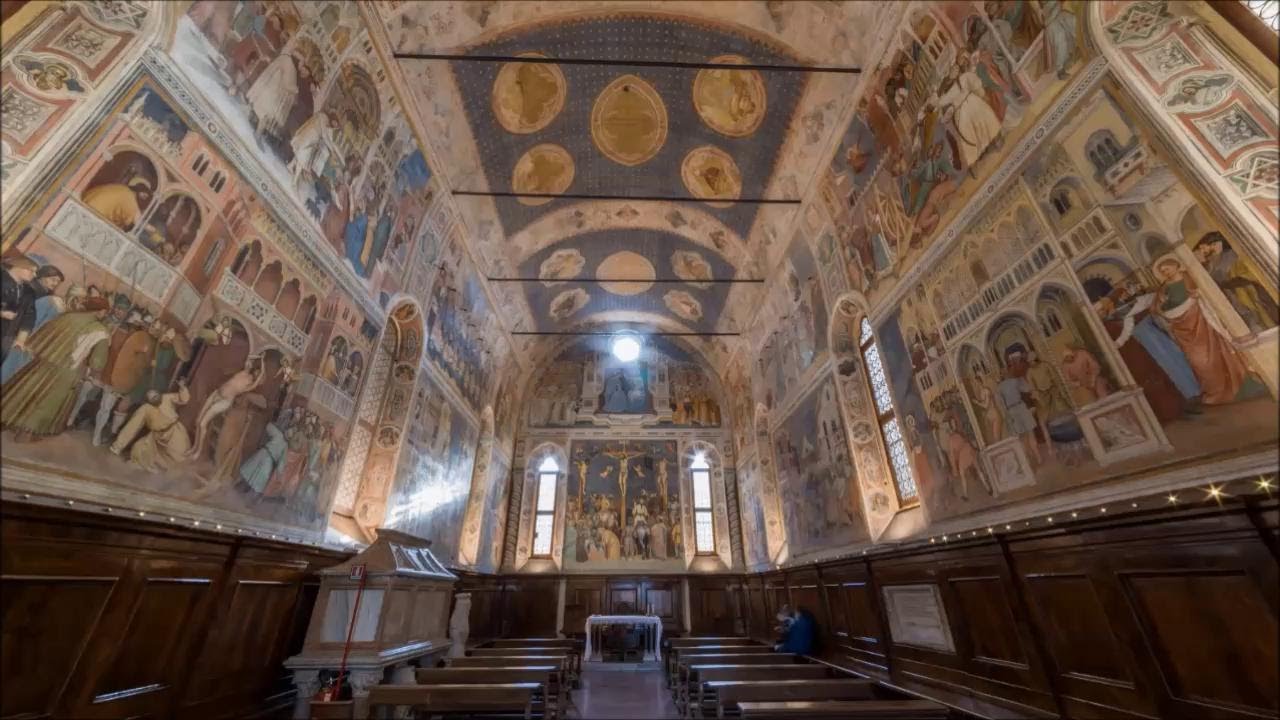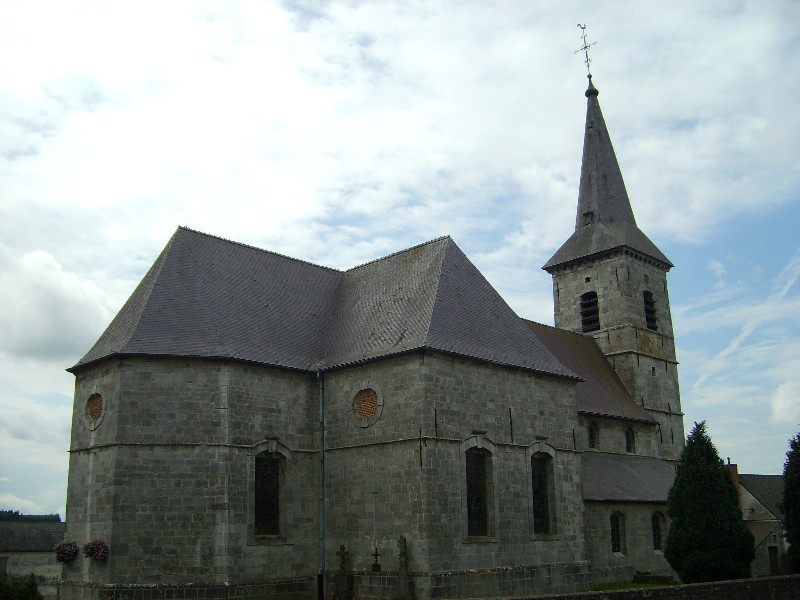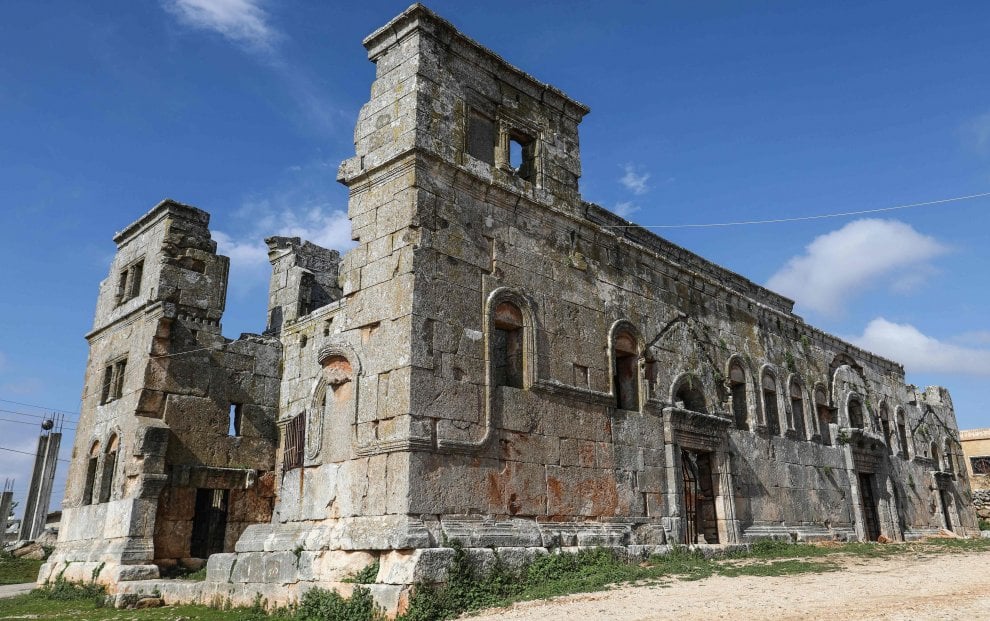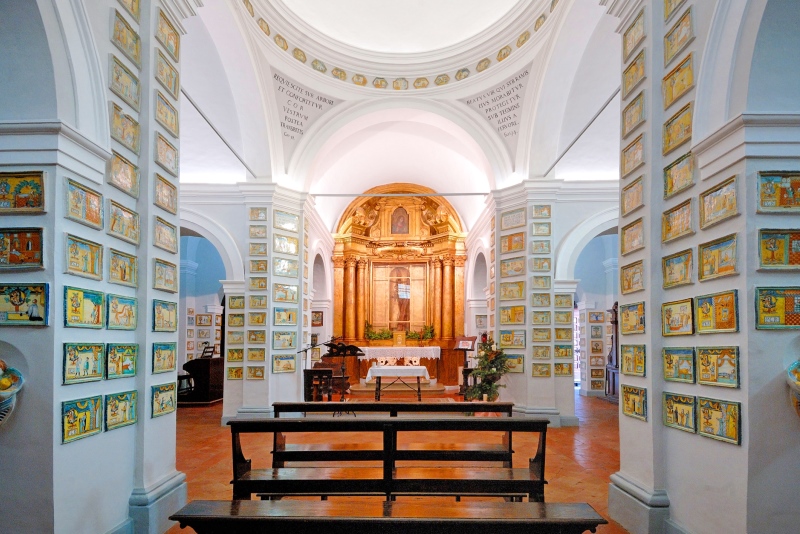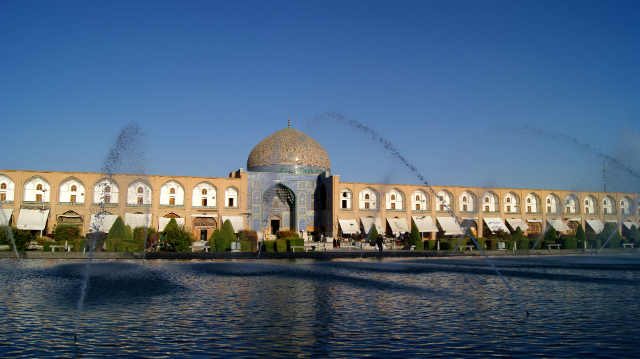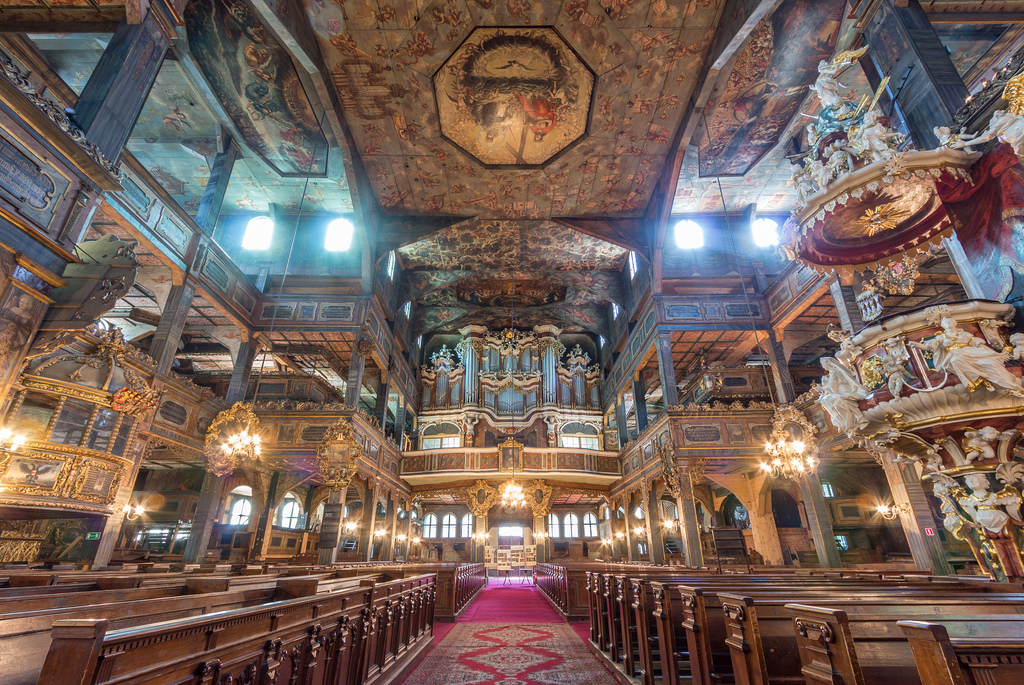The Oratory of San Giorgio presents a pictorial cycle painted by Altichiero da Zevio who completely decorates its interior walls with the collaboration of Jacopo da Verona, author of the cycle of frescoes in the Oratory of San Michele.
The iconographic programme is centred on the Life of Christ and on the lives of the patron saints of the Lupi family (Saint George, Saint Catherine and Saint Lucy) taken from the Legenda Aurea of Jacopo da Varagine, probably written by Lombardo della Seta, secretary of Francesco Petrarca, represented in the episode of the Baptism of King Sevio, close to the Marquises of Soragna, and with the help of a learned exponent of the Franciscan order.
Within the series we can observe here an illusionism of perspective, always with an attention to the relationship between real space and painting, but with a new search for a more suffused luminosity of colour linked to the rendering of space.
The Flight into Egypt takes up and develops a solution already used by Giotto in the Scrovegni Chapel: the two scenes feature the same landscape elements – the wooden hut, the rocky backdrop, the fortress – which, however, from one panel to the next, flow to the left, an expedient that highlights the unfolding of the narrative sequence and the temporal succession between the two scenes. Courtly spirit.
The pictorial cycle also exalts the warrior virtues of the Lupi family in the service of the Signoria dei Carraresi and of the city, also highlighted by the funerary monument placed at the centre of the oratory in the original programme: the members of the family are represented with inscriptions bearing the names of each one, portrayed in armour, while kneeling before the Madonna and accompanied by their patron saints.
The cycle of frescoes develops within large frames that connect the real space to the simulated space of the paintings. The scenes are organised in two superimposed registers covered by a barrel vault divided into three bays by painted decorative bands.
The quality of the paintings, the perspective solutions, the adherence to the real datum make this cycle such an innovative masterpiece that it anticipates the spatial research of the 15th century.
The declared desire to refer to Giotto’s model of the Scrovegni, in the architectural layout, in the decoration within frames organised in overlapping registers, in the precise citation of the starry vault with figures within clypeus, clearly emerges from observation of the Oratory of San Giorgio, but in a new Gothic style.
